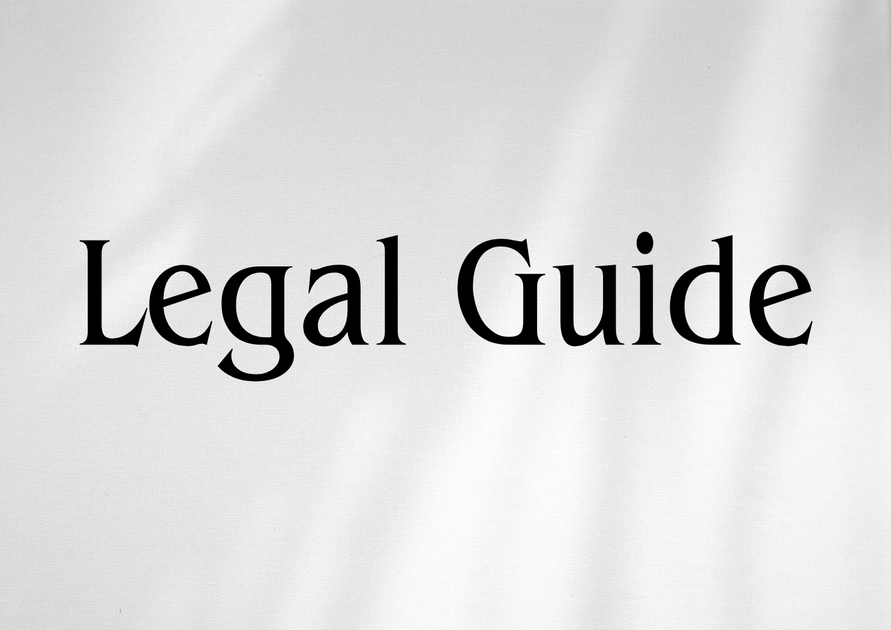Introduction: Why Debt Recovery and Commercial Enforcement Matter in the UAE Today
The UAE continues to establish itself as a leading global commercial hub, attracting businesses, investors, and professionals from every continent. With the exponential growth in trade, finance, and cross-border investment, issues surrounding debt recovery and commercial enforcement have become increasingly critical. As of 2025, the UAE has implemented significant legal reforms — shaped by Federal Decrees and Cabinet Resolutions — that profoundly impact the mechanisms and strategies available for creditors, debtors, and commercial entities alike. These reforms are not just technical alterations, but represent a commitment to greater legal clarity, commercial certainty, and investor protection.
This article provides an in-depth, practical analysis of the latest UAE debt recovery framework, examining the principal laws, their application in real-world contexts, and the essential compliance strategies for businesses. Whether you are a general counsel, executive, HR manager, or private investor in the Emirates, understanding this evolving legal landscape is indispensable for risk mitigation, financial planning, and corporate governance. The following professional guide synthesizes authoritative legal sources, practical consultancy insights, comparative legal tables, and actionable recommendations for ensuring proactive and compliant commercial relationships.
Table of Contents
- Legal Framework Governing Debt Recovery and Enforcement in the UAE
- Recent Developments and UAE Law 2025 Updates
- Step-by-Step Guide to Debt Recovery in the UAE
- Comparative Legal Analysis: Old and New Regimes
- Practical Mechanisms for Commercial Enforcement
- Case Studies and Practical Scenarios
- Risks, Legal Consequences, and Compliance Strategies
- Conclusion: Best Practices and Proactive Approaches
Legal Framework Governing Debt Recovery and Enforcement in the UAE
Federal Laws and Core Statutes
The UAE’s commercial and civil debt recovery and enforcement landscape is founded on an evolving set of legal instruments, including:
- Federal Decree-Law No. 42 of 2022 (Civil Procedures Law), laying down procedural rules for litigation, enforcement, and interim relief.
- Federal Law No. 18 of 1993 (Commercial Transactions Law), governing contractual obligations, commercial debts, and remedies.
- Federal Decree-Law No. 9 of 2022 (Regulating Bankruptcy), with special provisions on insolvency and creditor rights.
- Cabinet Resolution No. 57 of 2018 (as amended), providing further granularity on judicial procedures.
These Federal Laws are underpinned by judicial guidelines and regulations from the Ministry of Justice and are regularly updated via the Federal Official Gazette to reflect global best practices and UAE’s policy objectives.
Key Principles of UAE Debt Recovery Legal Regime
Under UAE law, creditors enjoy a structured framework for pursuing debt claims, whether through amicable settlement, mediation, commercial litigation, or summary enforcement mechanisms. Unlike some jurisdictions, the UAE balances creditor protection with fair debtor treatment, imposing defined timeframes and requiring strict observance of due process. The judicial system offers both onshore courts and specialized free zone courts (such as DIFC and ADGM) — each with tailored debt recovery procedures and enforcement powers.
Recent Developments and UAE Law 2025 Updates
Overview of 2025 Legal Reforms
Over the past three years, the UAE has enacted several key reforms enhancing transparency, enforcement, and efficiency in commercial debt recovery. The most significant 2025 legal updates include:
- Introduction of digital enforcement portals and e-notifications through amendments to the Civil Procedures Law, improving speed and ensuring secure creditor communications.
- Expanded summary proceedings: New procedures enabling creditors to obtain fast-track payment orders and provisional remedies, reducing the reliance on lengthy trials.
- Stronger creditor protections under bankruptcy law: Enhanced rules for asset tracing, priority of claims, and cross-border cooperation.
- Clarified enforcement of foreign judgments: Streamlined recognition processes for judgments rendered in major trading partner jurisdictions.
These reforms are directly referenced in recent Federal Decree-Law No. 15 of 2023 and associated Cabinet Resolutions — all accessible via the Federal Legal Gazette and the Ministry of Justice’s online resources.
Strategic Implications of the New Framework
The legislative updates reinforce the UAE’s commitment to being a creditor-friendly, globally competitive jurisdiction while continuing to safeguard procedural fairness and judicial integrity. Practically, these changes mean faster resolution, reduced court backlogs, and more predictable outcomes for businesses and investors facing non-payment or commercial disputes.
Step-by-Step Guide to Debt Recovery in the UAE
Pre-Litigation Phase: Amicable Settlement and Demand
- Initial Demand Letter: Creditors typically issue a formal demand (often required before initiating proceedings), outlining the debt, supporting documents, and a deadline for remittance.
- Negotiation and Mediation: Parties can voluntarily engage mediation — sometimes through courts or private ADR centers — to resolve disputes swiftly and preserve commercial relationships.
- Tip: Best practice includes clear written communication, robust contractual documentation, and evidence preservation at this stage.
Court Proceedings: Filing a Claim
- Submit a claim to the competent court (onshore Civil Courts, Commercial Court, or Free Zone Court) with all supporting documentation (contracts, invoices, proof of delivery, correspondence).
- The court notifies the debtor (now more streamlined with e-notification provisions post-2025 reforms).
- The debtor is granted a statutory response period (usually 15 days from service).
Judgment and Enforcement
If the debtor fails to pay or object with sufficient grounds, the court may issue a judgment for the claimed amount, including interest and legal costs. Recent updates now allow for:
- Summary Orders: Payment orders can be obtained on the basis of uncontested, clear debts (e.g., bounced cheques, promissory notes) under revised summary procedure rules.
- Expedited Appeal Mechanisms: New rules reduce the risk of frivolous appeals by imposing deposit requirements and stricter timelines.
- Asset Tracing and Attachment: The judgment creditor may request seizure of bank accounts, movable and immovable assets, and even proceeds from business operations.
Visual Suggestion:
Process Flow Diagram: Illustrate steps from initial demand to final enforcement, highlighting digital innovations introduced in 2025.
Comparative Legal Analysis: Old and New Regimes
Key Differences (Comparison Table)
| Aspect | Pre-2022 Regime | 2022-2025 Updates |
|---|---|---|
| Demand Letter | Often optional; Paper-based notice preferred | Now encouraged/required; E-notification recognized |
| Summary Proceedings | Limited to bounced cheques/bills of exchange | Expanded to clear and uncontested commercial debts |
| Enforcement Tools | Asset attachment slow, manual tracing | Integrated digital tracing and automated attachment through online portals |
| Foreign Judgment Recognition | Ad hoc, variable judicial discretion | Codified procedures, expedited process for key jurisdictions |
| Bankruptcy Protections | Basic creditor committees, protracted process | Specialized judges, digital claims portal, stronger creditor priority |
Visual Suggestion:
Penalty and Compliance Chart: Compare potential penalties and timeframes for non-compliance under the old and new legal frameworks.
Practical Mechanisms for Commercial Enforcement
Attachment and Execution Procedures
Enforcement of judgements in the UAE follows the structured process detailed in Federal Decree-Law No. 42 of 2022 and its executive regulations:
- Once a judgment or payment order is final, the creditor files an enforcement application with the Execution Department.
- The court may issue orders for the seizure of funds in bank accounts, freezing of assets, or public auction of property.
- For corporate debtors, company shares, receivables, and stocks may be attached.
- Digital banking and real estate registries introduced in 2023–2025 enable rapid asset identification and enforcement across Emirates.
Cross-Border and Foreign Judgment Enforcement
The 2025 updates clarify and simplify the recognition of foreign judgments as follows:
- Reciprocity Principle: Courts may enforce foreign judgments if reciprocity exists, subject to UAE public policy and due process safeguards (Federal Decree-Law No. 16 of 2023).
- Streamlined Procedures: Timeframes for recognition reduced; documentation requirements standardized.
- Parties are advised to consult with legal counsel to ensure compliance with local rules and to mitigate execution risk, especially in multi-jurisdictional matters.
Alternative Dispute Resolution (ADR)
The UAE encourages mediation and arbitration for commercial disputes, with the UAE Arbitration Law (Federal Law No. 6 of 2018) offering a robust framework. Enforcement of domestic and foreign arbitral awards is now harmonized with court judgment enforcement, subject to expedited processes and fewer grounds for challenge.
Visual Suggestion:
Compliance Checklist Table: Steps required for effective enforcement, common pitfalls, and recommended documentation.
Case Studies and Practical Scenarios
Case Study 1: Recovering Trade Receivables through UAE Civil Courts
Scenario: A Dubai-based distributor faces non-payment from a regional retailer. After serving a compliant electronic demand letter, and a short period of mediation, the matter escalates to court.
- The court accepts e-notifications, reducing administrative delays.
- On submission of documentary evidence, a payment order is swiftly granted under the summary procedure rules (Federal Decree-Law No. 42 of 2022, as amended in 2025).
- Execution is achieved within 45 days via digital asset tracing and bank account attachment.
Case Study 2: Enforcement of a Foreign Judgment
Scenario: A European supplier obtains a judgment in its home jurisdiction and seeks enforcement in Abu Dhabi.
- The UAE court applies the new standardized criteria for reciprocity, due process confirmation, and compliance with UAE public order.
- The process is completed in under 60 days, aided by the digital submission portal and harmonized documentation requirements.
Case Study 3: Corporate Insolvency and Creditors’ Rights
Scenario: A limited liability company defaults on multiple loans. Under the revised Federal Decree-Law No. 9 of 2022 (Bankruptcy Law), creditors use the new digital claims portal, participate in the creditors’ committee, and successfully negotiate asset liquidation priorities.
Practical Insight: Each scenario demonstrates the tangible benefits delivered by recent 2022–2025 reforms: greater certainty, faster outcomes, and more effective recourse for creditors, confirming the UAE’s globally benchmarked system.
Risks, Legal Consequences, and Compliance Strategies
Risks for Non-Compliance and Weak Documentation
- Delayed recovery due to incomplete or poorly drafted contracts.
- Inadmissible claims arising from procedural lapses or missed deadlines.
- Potential counterclaims or penalties if improper notice or service is alleged.
- Reputational harm and increased audit scrutiny for persistent non-compliance.
Legal Consequences and Penalties
Under the revised framework, parties may be subject to:
- Fines for non-compliance with court orders (from AED 5,000 to AED 100,000 depending on the infraction).
- Court-imposed interest (statutory or contractual) on overdue sums.
- Restraining orders on asset transfer or company operations in event of persistent default.
Best Practice Compliance Strategies
- Maintain clear, written contracts with dispute resolution and jurisdiction clauses referencing UAE law.
- Document all communications and transactions (including digital records for admissibility in court or arbitration).
- Act promptly at first sign of default — preserve evidence, issue formal demands, and consider early mediation.
- Utilize certified legal representation familiar with the 2025 update to UAE law to avoid technical or procedural errors.
- Periodically audit contracts and receivables in partnership with experienced legal counsel.
Visual Suggestion:
“Compliance Quick Tips” Infographic: Highlight the top five steps every UAE business should take to remain protected.
Conclusion: Best Practices and Proactive Approaches
With the UAE’s strategic legal updates in 2025, the country offers a creditor-friendly regime that is streamlined, technologically advanced, and globally harmonized. These reforms have enhanced the certainty, speed, and enforceability of debt recovery and commercial enforcement for both domestic and international parties. For businesses and professional advisors, strict adherence to new legal provisions, digital compliance requirements, and robust contractual practices is no longer optional, but essential.
As the UAE market matures and integrates further with the global economy, companies must prioritize legal due diligence, regular training, and engagement with trusted legal consultants. Proactive management of debt recovery risks and leveraging the enhanced commercial enforcement landscape will be the defining factors for sustained growth and operational resilience in the Emirates in the years ahead.



